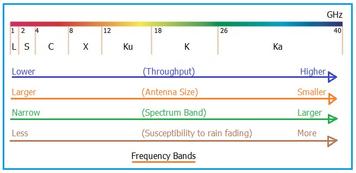Aircraft Radio Frequencies for Aviation: Bands and Systems
Advertisement
This page covers the aircraft radio frequencies used as aviation frequency bands. It details the frequencies employed in aircraft systems, including LOS, VOR, GS, TCAS, ATCRBS, DME, GPS L2, GPS L5, L1, and more.
Table 1 outlines these frequencies and their corresponding systems.
Table 1: Aircraft Radio Frequencies and Systems
| Frequency range | Aircraft system | Radio spectrum |
|---|---|---|
| 105 to 140 MHz | LOS VOR(Very High Frequency Omnidirectional Range) | VHF |
| 108.1 to 111.95 | ||
| 108 to 117.95 | ||
| 118 to 188 | ||
| 325 to 340 MHz | GS | |
| 328.6 to 335.4 | ||
| 960 to 1250 MHz | TCAS(Traffic Alert and Collision Avoidance System) ATCRBS(Air Traffic Control Radar Beacon System) DME(Distance Measuring Equipment) | |
| GPS L2 GPS L5 | ||
| 1090 | ||
| 1030 | ||
| 962 to 1213 | ||
| 1227.60 | ||
| 1176.45 | ||
| 1565 to 1585 MHz | L1 | |
| 1575.42 +/- 2 |
Aviation Radio Frequency Bands
Table 2 provides further details about aviation radio frequency bands, including their respective band designations and applications. These frequencies are used globally.
Table 2: Aviation Radio Frequency Bands and Designations
| Frequency Range | Band Designation |
|---|---|
| 190 - 435 & 510 - 535 kHz | Non-directional Beacons (NDB) |
| 2100 - 28,000 kHz | HF Radio Communications |
| 75 MHz | NAV-AID (Marker Beacons) |
| 108 - 112 MHz | VOR and ILS Localizer |
| 112 - 118 MHz | VOR, SCAT-I Radio navigation link |
| 118 - 137 MHz | VHF Air & Ground Communications |
| 138 - 150.8 & 162 - 174 MHz | Fixed, Mobile |
| 225 - 328.6 & 335.4 - 400 MHz | UHF Air , Ground Communications (in US Military) |
| 328.6 - 335.4 MHz | ILS Glide Slope |
| 406.1 - 420 MHz | Fixed, Mobile |
| 932 - 935 & 941 - 944 MHz | RMM, LLWAS, LDRCL etc. |
| 960 - 1215 MHz | NAV-AID (TACAN / DME, etc.) |
| 1030 & 1090 MHz | Air Traffic Control Radar Beacon, Mode S, TCAS |
| 1215 - 1400 MHz | Air Route Surveillance Radar, GPS and GLONASS L1 |
| 1545 - 1559 MHz | Satellite Based Communication (To the Aircraft) |
| 1559 - 1610 MHz | Satellite Navigation , GPS and GLONASS L1 |
| 1646.5-1660.5MHz | Satellite Based Communication (From Aircraft) |
| 1710 - 1850 MHz | LDRCL, fixed links |
| 2700 - 3000 MHz | Airport Surveillance and Weather Radar |
| 5000 - 5250 MHz | Microwave Landing System |
| 5600 - 5650 MHz | TDWR |
| 7125 - 8500 MHz | RCL |
| 9000 - 9200 MHz | Military Precision Approach Radar |
| 14.4 - 15.35 GHz | Microwave Link |
| 15.7 - 16.2 GHz | Radar (e.g. ASDE-3) |
| 21.2 - 23.6 GHz | Microwave Communication Link |
Visit following link for additional information: https://www.freqofnature.com/aviation/aviation_frequencies.html
 RF
RF


